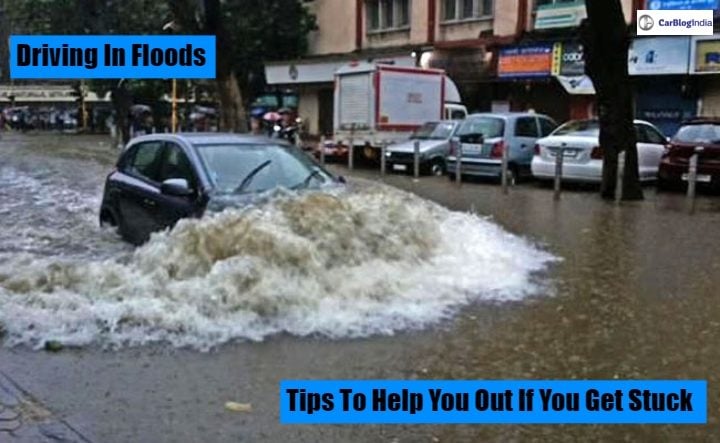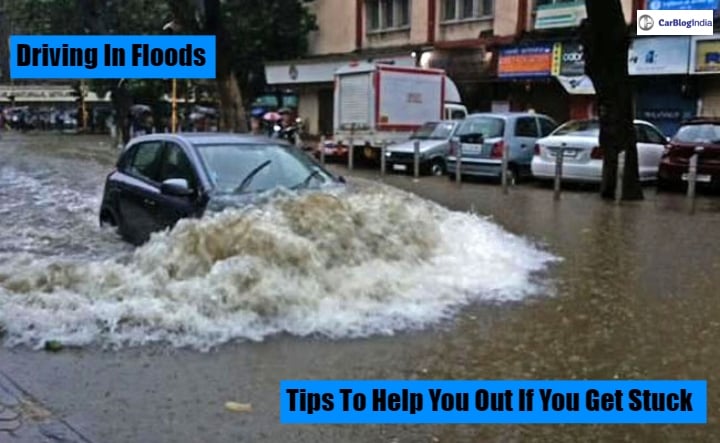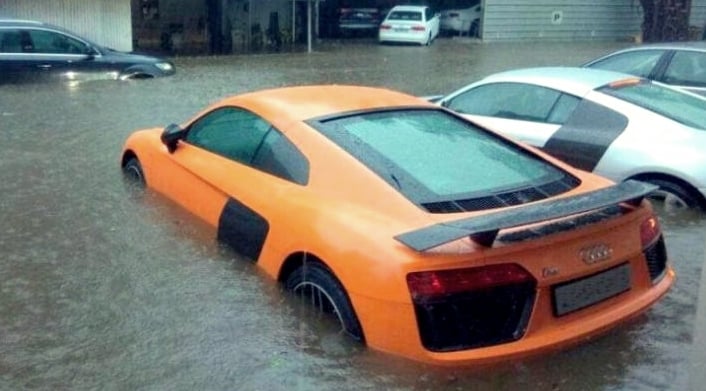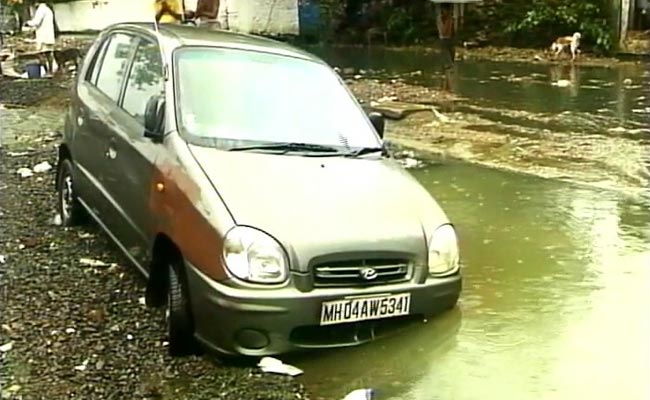The impact of Cyclone Amphan in Eastern India is drastic and is increasing by the hour. Nearly 100 people have died in this disaster and it has completely damaged the states of West Bengal and Orissa.
The cyclone has damaged public property, left many people homeless and even damaged many households. In these difficult times, many might also be worried about their cars parked outside. Or what if you have to go for an emergency through a heavy thunderstorm and flooded roads? Here are some tips to ensure that you are driving safe and if your car is parked in the open, it is safe.

Also Read: Car Care Tips For Monsoon
How To Take Care Of Your Car While Driving Through Floods And Cyclone
1. Keep the engine revving higher – Before driving in a flood, assess the water level and condition of the streets. If favourable, drive through the street on the first gear and keep your engine revving higher than usual in order to keep the water entering from the exhaust and damaging the engine.
2. Drive Slow– Heavy rain results in low visibility and minimal traction. Hence, when driving in flood water, the best advice is to go easy on the brakes and throttle. This result in hydroplaning, which will cause you to lose control of your car. The braking distance for cars also and in the case of Mumbai, it increases even more because of its concrete roads.
3. Abandon your car if the water level reaches the door- If the water level doesn’t show any sign of reducing, its best advised to park your car in the corner of the road and inform a civic body. If someone continues to drive in a heavily waterlogged street, chances are that the car might get locked from the inside and the windows will also not function due to electrical failure. You must find a safe corner spot for your car for parking. You can always salvage your car later on.
4. Head Rests double up as glass breakers- If you happen to be stuck in your car surrounded by water, you can use your car’s headrest as a glass breaker to set free. Even though it is advised to keep a small hammer in the car’s boot or in the glove box for emergency situations, your car’s headrest can save your day for doubling up as a glass breaker.
5. Avoid coming in close contact with an electric pole or tree – If you are parking a car ensure that it is not under a tree or an electric pole. In the case of thundering, a tree or a pole might just fall on your car. Even if you are driving, ensure that you are at a safe distance from the trees.
6. Take a halt if you cannot see ahead – In case if you cannot see the road ahead, it is advisable to take a short halt at a safe place or inside a shed. If the conditions are not getting better and you have to leave, then please driving slowly with parking lights and fog lamps switched on.
Also Read: Delhi On Dust Storm Alert- How To Protect Your Car From Dust
How To Take Care Of Your Parked Car In Floods And Cyclone
1. Turn off the engine- You risk the flooding of your air inflow with water if you continue to drive on a waterlogged street. The first thing to do when water becomes a lot to handle is to switch off your car engine. This will prevent water from entering the air intake and choking the engine. If your air intake is already compromised, it is still advisable to switch off the engine so as to avoid its seizure.
2. Park in the corner of the road– Don’t park your car in the middle of the road and abandon it. Try to park your car away from trees and poles so as to avoid any catastrophic accident. If a corner is not accessible, it’s advisable to park at some higher patch of ground, away from water before you can restart your engine. 3. Disconnect the battery- If you can, remove the battery connections of your car. This will avoid any accidental short circuits and will keep the electrical system safe. Once you reconnect, check all electrical systems carefully and if you see any flickering or disturbance, turn the engine off and contact your mechanic.
3. Disconnect the battery– If you can, remove the battery connections of your car. This will avoid any accidental short circuits and will keep the electrical system safe. Once you reconnect, check all electrical systems carefully and if you see any flickering or disturbance, turn the engine off and contact your mechanic.
4. Wait for the water to recede- After leaving your car in a safe spot, wait for a few days for the water level to decrease. Once you revisit your car, do not turn on the engine as some moisture might still be there in the engine. You also have to disconnect your battery, if you didn’t do the same before. Start drying the interiors of your car and take your car to a mechanic for repair. You should contact your insurance company if your car insurance covers flood damage.




